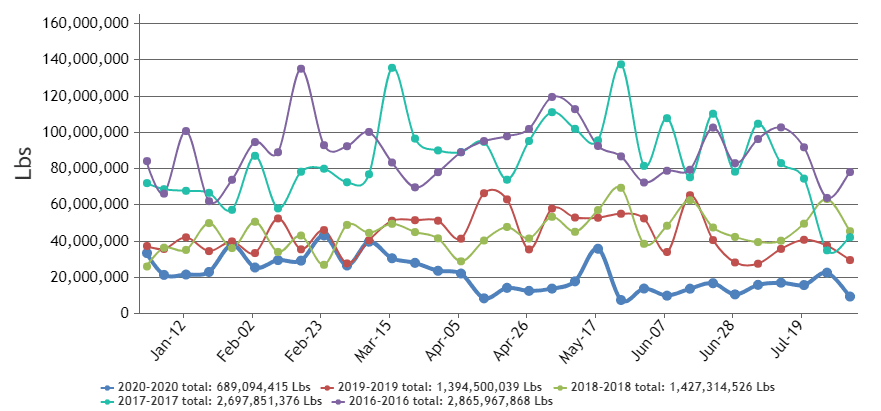Many fruits and vegetables are seeing strong demand and healthy markets, but pineapples are one item that continues to suffer.
Early in the pandemic, supplies dropped to less than half of normal levels, which was attributed to shipping problems in addition to supply chain issues, including lower demand.
The tropical fruit has never recovered. Overall volume remain less than half of a typical year, but price trends aren’t much out of the ordinary.
Pineapples certainly are suffering from the weaker foodservice and institutional food markets, and weekly retail data trends show pineapples as one of the top items suffering from deflation.
Matt DeBoer, senior vice president of Agtools Inc. BB #:355102 said a clear story emerges when we look at the data.
Blue Book has teamed with Agtools Inc., the data analytic service for the produce industry, to look at a handful of crops and how they’re adjusting in the market during the pandemic.
He said the supply issues are evident looking at 2020 compared to previous seasons. Over 90 percent of the volume is produced in Costa Rica (73 percent), Honduras (10 percent) and Mexico (9 percent), and when we look into the 3, 5, and 7-year supply pattern, a trend emerges.
3-Year:
5-Year:
7-Year:
After seeing the disturbing volume trend, we look at the shipping F.O.B.s. The initial assumption is that with lack of supply, comes higher pricing, DeBoer said. Looking at the port of entry in Philadelphia, while there is a rise in late January and February, pricing remains fairly consistent over the last three years.
Things get a little more interesting when we dig into the 5 count and 6 count pineapples, which make up the majority of the volume produced, he said. Looking at all three ports, there is virtually no difference in shipping F.O.B.
Let’s look at Philadelphia a little closer now. You can see they are virtually the same price.
When we go to the terminal market pricing in Philadelphia, a pattern emerges when compared to the shipping F.O.B.s, DeBoer said. Easter holiday in March brought in a little more money at the terminal level, but pricing basically followed the F.O.B. pattern above.
Now, we move to retail pricing to see what is happening in the same area of the country – the Northeast. Aside from a rise to $4.99 in April, retail pricing has been consistently $2.99 – 3.99. Promotions have generally run at $1.99 with exception of a 4th of July promotion at 79 cents, he said.











